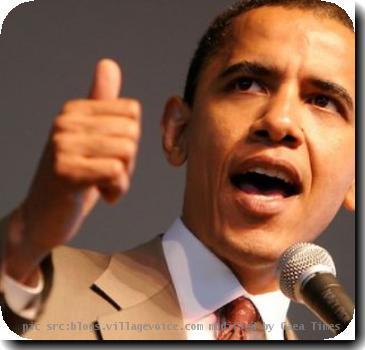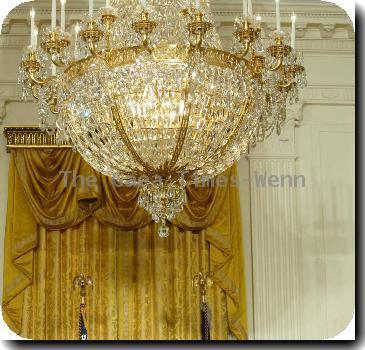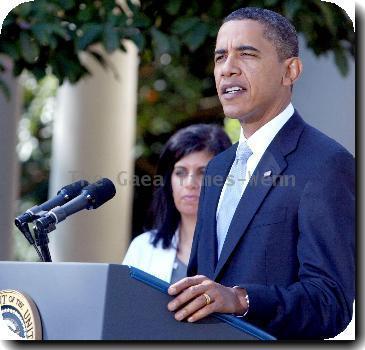Pentagon seeks billions of new dollars to battle terrorism, cyber threats in US and abroad
By Lolita C. Baldor, APThursday, February 4, 2010
Pentagon seeks billions to battle terror abroad
WASHINGTON — The Obama administration is seeking billions in budget increases to target terror threats from abroad, especially Pakistan and Yemen, with boosts for surveillance and attack drones, special operations forces and a new military cyber command.
The focus is on regions that have served as insurgent sanctuaries, where U.S. counterterror officials say the next attack against America is likely being planned.
Pentagon aid to Pakistan would balloon to $1.2 billion in 2011, aimed at bolstering its war on internal militants. And military funding to target al-Qaida could double in Yemen, where the U.S. spent more than $6 million last year just on aerial surveillance provided by drones, according to internal documents obtained by The Associated Press.
The rise in proposed counterterror spending reflects a new urgency within the administration, dovetailing with warnings this week from top intelligence officials of a possible terror strike from abroad within the next six months.
The boost in Pentagon funding would also target a wider array of enemies, from al-Qaida and allied militant networks and dangerous nation-states, to sophisticated computer hackers and homegrown insurgents armed with dirty bombs.
Pentagon and White House officials would not put an overall total on the amount of money in this week’s proposed budget aimed at countering terrorists abroad. Much of that funding is hidden behind classified budgets, including the unacknowledged CIA effort to use drone-launched missiles to target al-Qaida and other militants along the Pakistan-Afghanistan border.
But one indication of the sweep of increased spending is evident in a massive Pentagon account used to provide training, equipment and other assistance to foreign militaries. Under President Barack Obama’s budget proposal, that fund would increase from $350 million in 2010 to $500 million in 2011.
Documents obtained by the AP show that the account was used this year to provide counterterrorism aid, training and other programs to countries ranging from Bangladesh and Nigeria to Lebanon and Pakistan. The money paid for training, surveillance activities, aircraft, radar, communications equipment and other resources.
Administration and military officials noted that total U.S. counterterror funding also stretches well beyond the visible military aid. It is parceled into economic development, diplomacy and other socio-economic spending that is designed to stabilize and strengthen countries where insurgents take root.
In Pakistan, an already-growing counterinsurgency fund would jump from $700 million combined in 2009 and 2010, to $1.2 billion in 2011. That money would include expanded efforts by special operations forces to train and equip Pakistan’s paramilitary Frontier Corps near the lawless border region that hides al-Qaida and internal militants.
On Wednesday three U.S. special operations soldiers who were participating in that low-profile program were killed and two others wounded in a roadside bomb attack. They were the first known U.S. casualties in northwest Pakistan’s tribal area along the Afghanistan border.
U.S. officials have said they hope to train more than 9,000 members of the Frontier Corps, and slash their previous four-year training time by half. The Frontier Corps is considered a critical ally in rooting out al-Qaida leaders hiding in the mountainous border region.
The Pentagon’s overseas funding — aimed at bolstering the ability of allied governments to stabilize and defend their nations — also is providing four helicopters at a cost of nearly $80 million and spending about $13 million on ground-based surveillance for Pakistan.
In Yemen, where al-Qaida elements are suspected of aiding in the Christmas Day attack on a Detroit-bound airliner by a Nigerian suspect, American counterterror funding is expected to more than double, from $67 million in the past year to as much as $140 million.
“It’s obvious to us,” Defense Secretary Robert Gates told Congress this week, that “helping (Yemen’s leaders) build their own capabilities in lieu of eventually perhaps having to have U.S. forces present on the ground in substantial numbers or doing this ourselves is clearly much cheaper and much better for us.”
Gen. David Petraeus, head of U.S. Central Command, has said he believes the Yemen funding will double. But Pentagon officials said Wednesday there have been no final decisions and the money allocated for this year has not begun to flow.
According to documents, the aid that began flowing to Yemen last year included almost $6 million for aerial surveillance. That figure would include flights of pilotless drones — which have been critical to the recent increase in Yemeni operations against insurgent leaders.
Another $6 million was spent on counterterrorism and efforts to defeat roadside bombs. The bulk of the remaining money was used to fund border and maritime security in Yemen, which is separated by the Gulf of Aden from Somalia, a haven in recent years for seagoing pirates.
The Pentagon also spent $10 million over the past year to help Ethiopia build counterterrorism platoons. The U.S. has worked with Ethiopia in the past to counter the rise of militants in neighboring Somalia, which is endangered by the al-Shabab terror faction, now allied with al-Qaida.
Special operations forces would also get more money and provide for more troops under the new budget proposal. U.S. Special Operations Command would get an additional $800 million — going from $9 billion in 2010 to $9.8 billion in 2011.
The plan would also add 3,651 more civil affairs and psychological operations forces and 4,027 combat and combat service support troops to the special operations forces by 2015. Military officials could not say how much those added personnel would cost.
There are currently about 2,500 psychological operations forces and 900 civil affairs troops assigned to Special Operations Command.
To augment counterterror operations, the Pentagon is also looking to dramatically expand its surveillance and strike capabilities. The proposed budget would double the number of unmanned Reaper drones over the next two years — from 24 in this fiscal year to 48 in 2012.
Use of the drones by the U.S. military in Afghanistan, Iraq, and other hotspots has skyrocketed in recent years.
Also moving up in priority, cyber threats will consume more of the federal budget in 2011 than ever before — including the launch of the military’s new Cyber Command.
Pentagon officials are asking for $139 million — compared to about $34 million this year — to set up temporary facilities for the new command at Fort Meade in Maryland, and will spend an additional $59 million on personnel and operations.
Defense policy chief Michele Flournoy said the Defense Department has to better organize itself to deal with cyber challenges, both offensive and defensive.
Pentagon officials rarely discuss the nation’s capability for offensive cyber strikes, but as the U.S. is increasingly targeted from abroad, they are growing more open about that prospect.
“There’s a lot of ongoing activities,” Vice Adm. Stephen Stanley told reporters when asked about cyber operations during a briefing on the budget.
“We’re establishing defenses. We are involved in exploitation activities,” he added. “And we’re positioning ourselves in order to be able to conduct attacks. So all of those different areas are ongoing. The cyber command focuses it and establishes the structure that we’ll use in the future.”
Tags: Afghanistan, Asia, Barack Obama, Bombings, Business And Professional Services, Central Asia, Geography, Middle East, National Security, North America, Pakistan, South Asia, Terrorism, United States, Washington, Yemen


